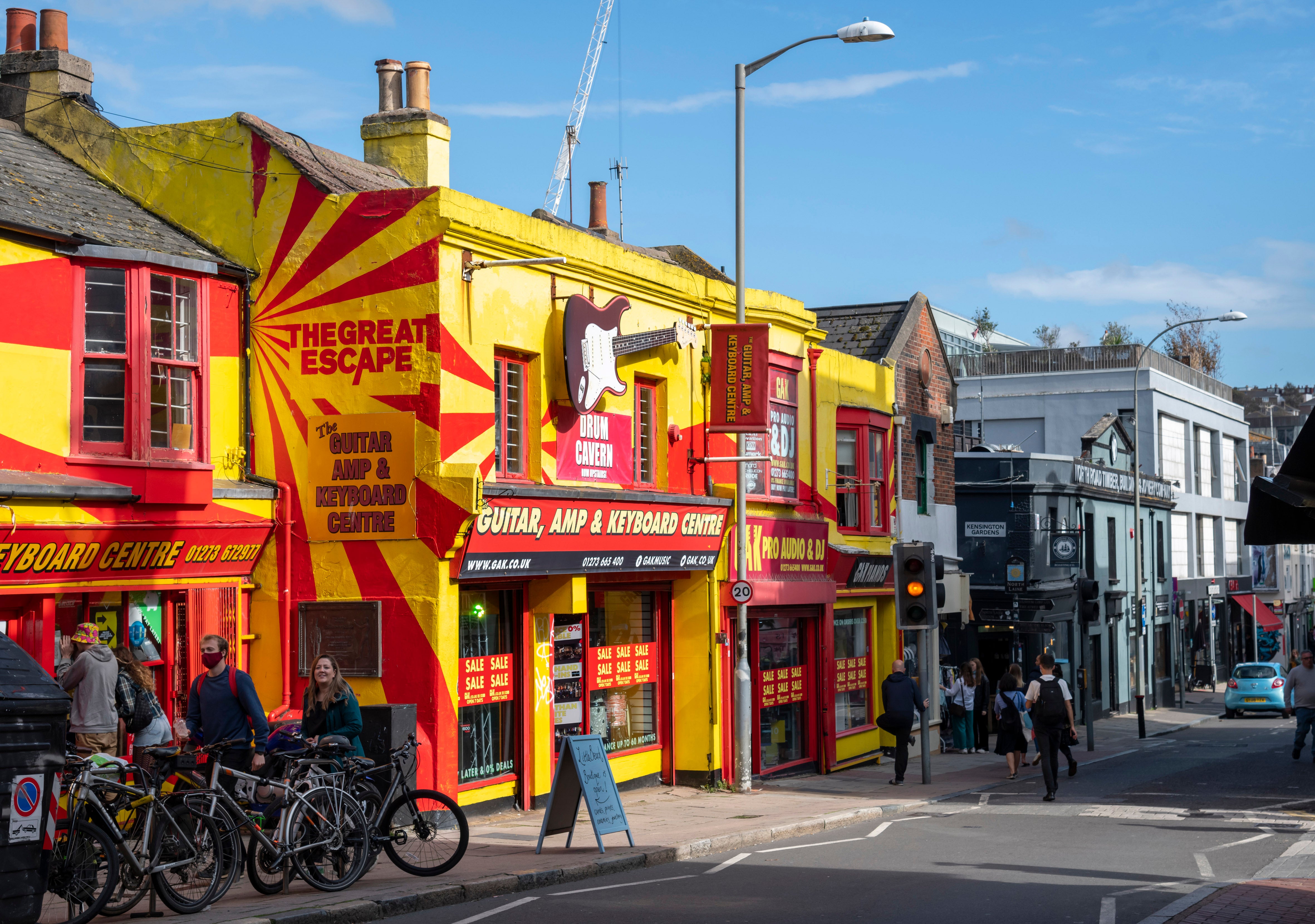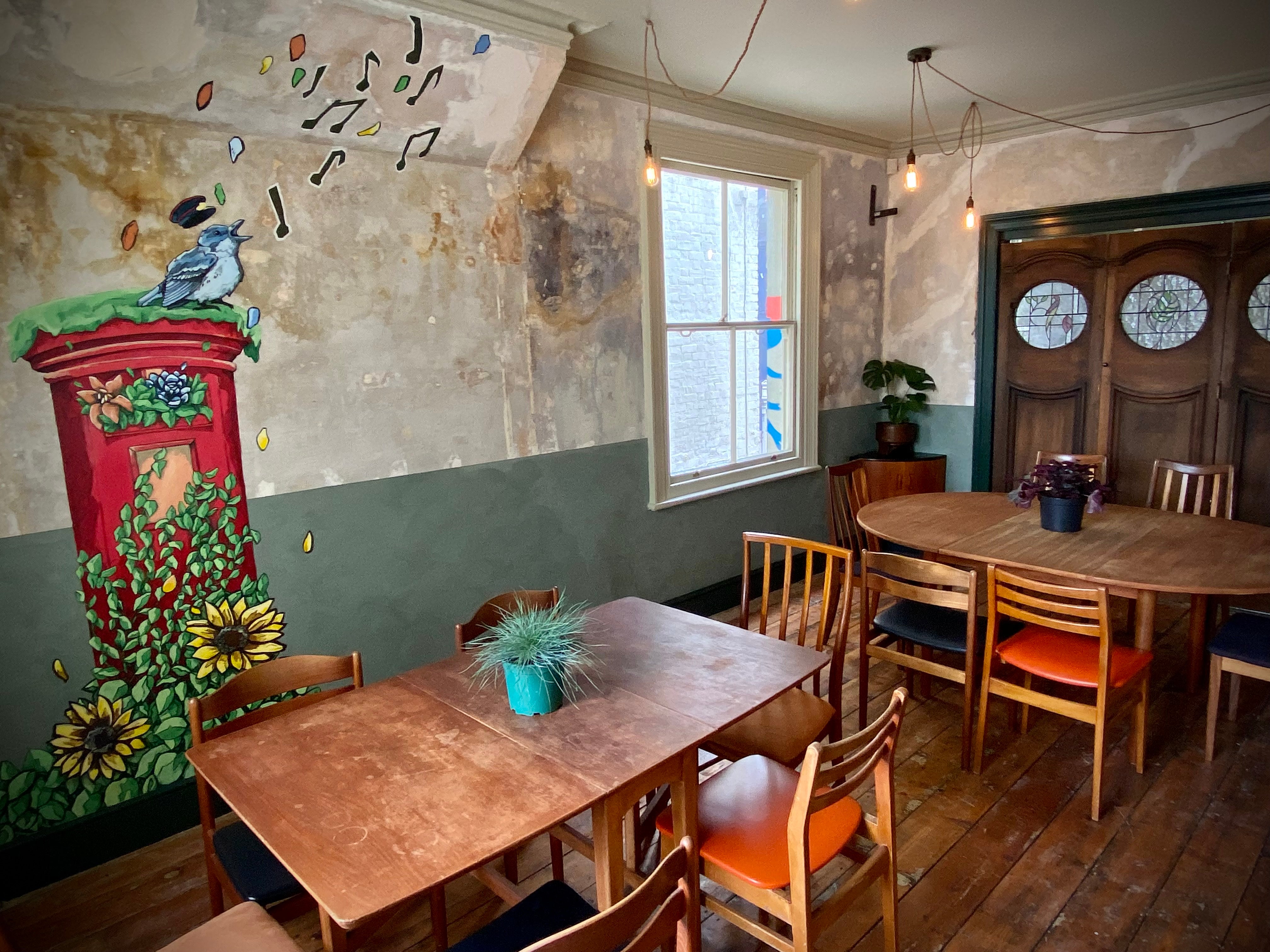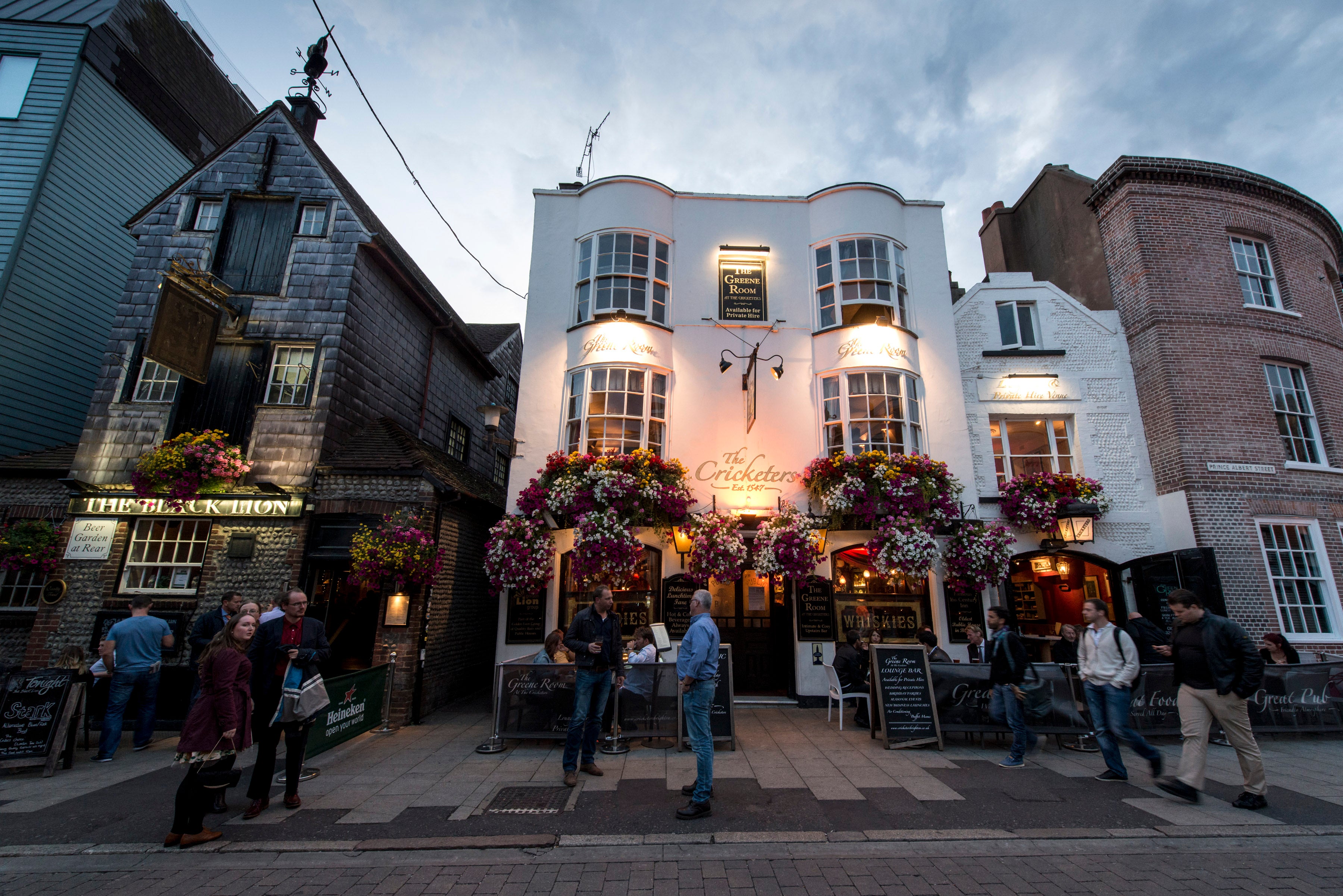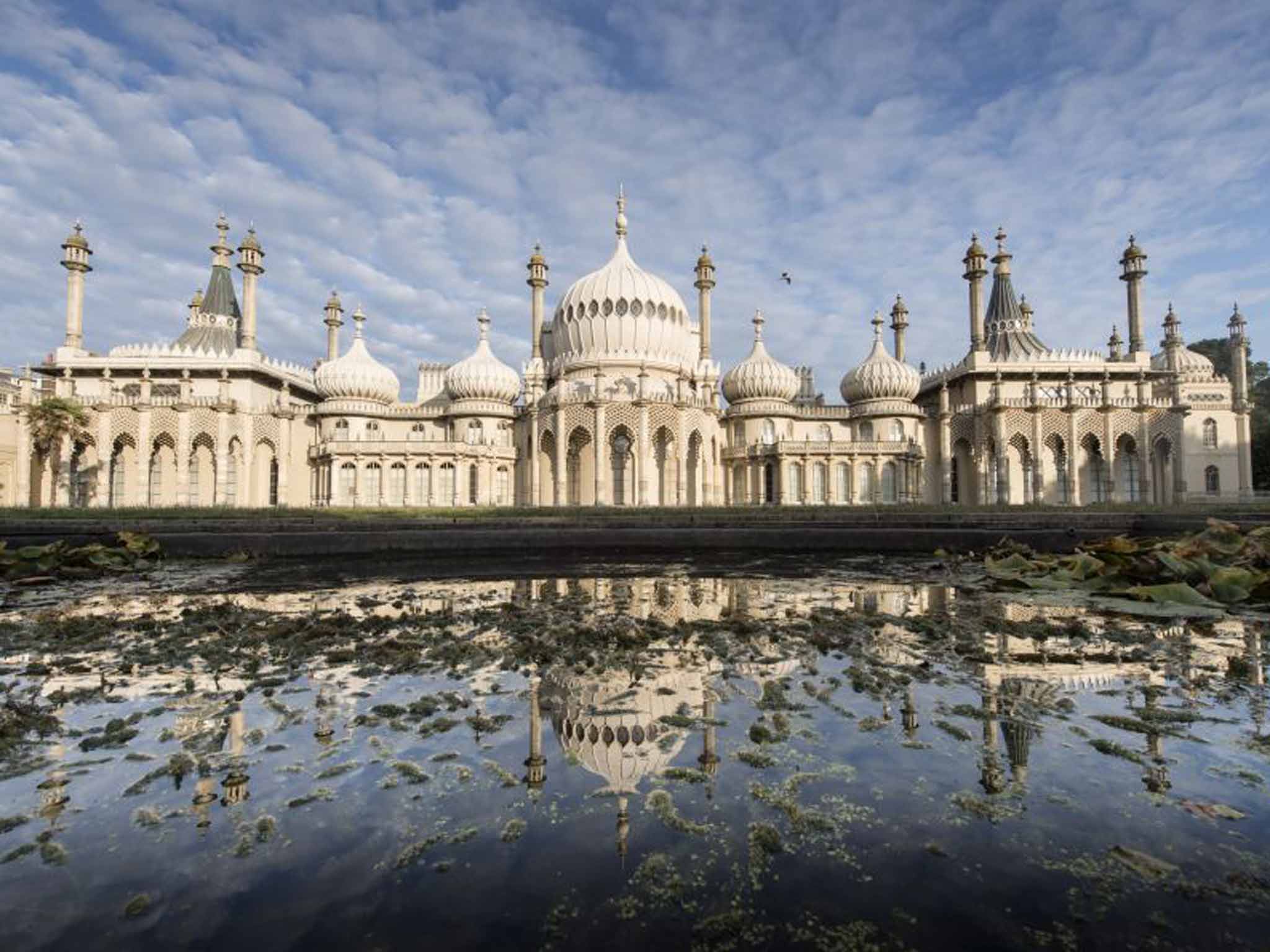
“Never normal” is the tagline of Brighton’s marketing campaign and, darn it, we think they’ve nailed it. From its Regency heyday as a seaside escape for the upper classes to the rise of clubbing culture in the early 2000s, Brighton has always marched to the beat of its own drum.
These days, it’s a haven for liberal thinkers, open minds and creative spirits – though you wouldn’t always guess its eccentricity in high summer, when it’s heaving with day-tripping families and stag parties. But all contingents unite on one point: Brighton is a place for merrymaking, whatever that means to you. And my, does it deliver.
What to do
Be beside the seaside
It’s possible to spend a full weekend in Brighton and not move from the seafront. Browse the art shops and galleries along the arches, or take a load off on the pebbly beach with fish and chips (Captain’s is a cut above the rest). The fairground rides on the Palace Pier might be rickety, but there’s no better way to spend £1 in Brighton than on those 2p slot machines. The arcade there is perfect for the odd rainy day. You’ll find quality buskers near the i360, a strange sightseeing pod-slash-tower, while at night, the circus contingent of Brighton often comes out with mesmerising fire juggling and poi performances.
Meanwhile, the more aquatically minded can rent kayaks or SUPs at Brighton Watersports (first-timers can dip their toe in, so to speak, at Hove Lagoon). A more relaxing option is the boat trip out to Rampion Wind Farm (£40 for a two-hour ride), or a seafront sauna (£30 for a 90-minute session) followed by a refreshing dip in the sea.
Paint the town red
With its full calendar of festivals and events like Brighton Fringe and Pride, plus constant stream of partygoers, there are few better places for a big night out. The clubs along the seafront and West Street are something you’ll either flock to or avoid at all costs. For music-lovers, Chalk leans towards a younger crowd, while Rialto bends more towards the young at heart. And for a bit of cabaret – highly recommended – there’s always something on at The Queen’s Arms, in the UK’s LGBTQ+ capital of Kemptown.

Discover its past
In the annals of the Town Hall, the Old Police Cells Museum guided tour (£5) takes you around former holding cells to explain Brighton’s policing history. That would be dull elsewhere, but Brighton is where mods and rockers clashed in the 1960s, and an IRA bomb nearly killed Margaret Thatcher in the 1980s – the check-in slip that led to the conviction of John Magee is among the fascinating items on display. The cells are also alluded to in the Ghost Walk tour of the Lanes (£12), an entertaining bit of street performance with exactly the right amount of tongue-in-cheek humour. To get truly creeped out, head to the Victorian-era Booth’s Natural History Museum (free) for more stuffed animals and birds than you ever thought you’d see.
Where to stay
The Grand is the dominant hotel – its location practically defines the centre of the city, and its ornate facade is synonymous with Brighton’s seafront. It might be a little faded at the edges as a five-star hotel, but it still makes for a luxury stay. Doubles from £99, B&B. grandbrighton.co.uk
In a well-kept Regency townhouse, Oriental Guest House is neither big nor flashy, but it’s relatively peaceful and has the personal service to go with it. And we’re a sucker for the complimentary snacks and drinks. Doubles from £70, B&B. orientalbrighton.co.uk
There’s a social feel at Selina, which offers both basic but stylish dorms and private rooms in the heart of the city (so the earplugs in reception might come in handy). You’ll find a co-working spaces available, and a range of crafty workshops to participate in. Private doubles from £67, room only. selina.com/uk/brighton
If there’s more cash to splash, try the original location of boutique chain Artist Residence. On Regency Square, each of its 24 maximalist rooms/apartments are designed by artists with as much flair as you’d expect. It’s worth forking out a little extra for the larger rooms, as the smaller ones can feel cramped. Doubles from £95, room only. artistresidence.co.uk

Where to eat
Quick bites
At the Open Market, Casazul is a highlight, with a small but perfectly formed menu of tacos and tingas that transport you straight to Oaxaca. Elsewhere, the fifth-generation family business of VIP Pizza sources ingredients from its farm in Naples. Don’t leave the rustic restaurant without trying the Burrata e Culatello: the biggest burrata known to humanity, circled with rake-thin parma ham, atop the perfect sourdough bread. Or for a taste of something different, Kitgum offers the cuisine of west India’s community in east Africa, in up-tempo, vibey surrounds. Finally, Moksha Cafe is the best brunch place in town, with aspects like smokey homemade beans making all the difference. Walk-in only, so be prepared to queue at weekends.
Upscale eats
The new trend is for small plates, and we’re here for it. The original was 64 Degrees, a tiny, unfussy Michelin-worthy restaurant in the Lanes that lays on exquisite tasting menus. Aim for a seat at the counter to watch the chefs work their magic. Then there’s Market in the heart of Hove, a buzzy tapas joint that’s a fave with residents.
Newer to the scene is The Post House, a relaxed, hip joint with Mediterranean-inspired dishes and an expertly curated wine list. It’s decked out with homages to its former uses as a post office and a Withnail & I-appreciating café/bar. Or the current talk of the town is Burnt Orange, which is more refined, with super plush velvet seats, buzzy atmosphere and attentive service. Try the woodfired blackened salmon for the best of an all-winning menu.
Brighton’s always been ace for vegans and vegetarians but it is on fire right now. Try Kusaki, decked out with all the beauty and tranquility of Japan (there’s even a cherry blossom tree inside the restaurant). Dishes like sushi, curry and tempura are so divine that its vegan credentials fade into irrelevance.

Where to drink
Small Batch and Wolfox are the biggest names for coffee in Brighton, but the best? It’s a contentious issue, but our money is on Twin Pines (and check out the cosy living room-esque seating downstairs).
Bubble tea enthusiasts should head to Pearls in the North Laine, or for cream tea, there’s The Mock Turtle Tea Shop. It’s crammed with displays of fine China tea pots, decorative plates and trinkets that are a joy to gaze upon with a brew and freshly made scones.
Or further in the Lanes, there’s The Basketmasters Arms. Yes, it’s a Fuller’s pub, but it’s a special place for a tipple as you can open the dozens of tin boxes that decorate the walls to see what’s inside them, or leave your own surprise for the next curious soul to find. The elaborate DIY Bloody Mary station on Sundays is most welcome too.
It’s far too easy to spend a whole evening at Plateau, a candle-lit bar specialising in natural wines, but at least the hangover won’t be so bad. For cocktails, assuming the Twisted Lemon is full (the drinks are spot-on, but it’s harder to get into than the Berghain), the well-hidden Plotting Parlour is your next best bet. Its small selection veers towards the bitters, but the speakeasy vibe and great service make it a must.
Where to shop
The independent shops of the North Laine and the labyrinthine South Lanes are the biggest draw – so be prepared for a wallet-draining excursion. Along the pedestrianised street of Kensington Gardens, you’ll find the record store Resident (which often has in-store appearances) and Snooper’s Paradise, a surprisingly expansive flea market for all things weird, wonderful and vintage. Also make a stop at Beyond Retro, the vintage clothing specialists, and peruse the shelves at Magazine (set to close permanently on 2 April), housing an enormous range of independent – you guessed it – magazines.

Architectural highlight
It would be wilfully contrary to say anything but the iconic Pavilion, designed in 1815 by John Nash on the orders of the soon-to-be King George IV.
Nuts and bolts
What currency do they use?
Pounds sterling.
What language do they speak?
English.
Should I tip?
10-15 per cent should do it.
What’s the time difference?
Unsurprisingly, it’s on UK time.
How should I get around?
The city is mostly walkable if you don’t mind a few hills. City bikes are available, and you’ll find useful bike lanes across the city. Otherwise the tap-on/tap-off bus network is reliable.
What’s the best view?
Take a 30-minute bus ride to the top of Devil’s Dyke to survey the busy city of Brighton and the shimmering sea on one side, and the rolling hills of the South Downs on the other. Life-affirming stuff.
Insider tip?
Coincide a trip with the ever-fascinating Artists Open House. Most of the city centre stops are galleries, so head into residential areas for a proper peek into artists’ studios.
Travel essentials
Getting there
Brighton is just under an hour’s train journey from London, with services going from Victoria and London Bridge. Connect in London for trains from the rest of the UK.







